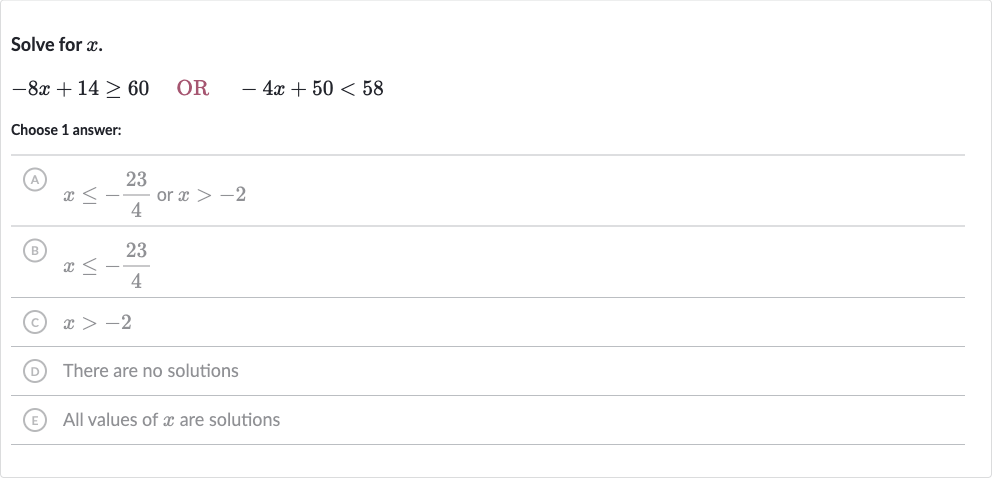Full solution
Q. Solve for .Choose answer:A or (B) (C) (D) There are no solutions(E) All values of are solutions
- Solving the first inequality: First, let's solve the inequality .Subtract from both sides to isolate the term with .Now, divide both sides by . Remember that dividing by a negative number reverses the inequality sign.
- Solving the second inequality: Next, let's solve the inequality -4x + 50 < 58.
Subtract from both sides to isolate the term with .
-4x + 50 - 50 < 58 - 50
-4x < 8
Now, divide both sides by . Again, remember that dividing by a negative number reverses the inequality sign.
\frac{-4x}{-4} > \frac{8}{-4}
x > -2 - Combining the inequalities: Now we have two inequalities:x > -2These two inequalities represent the solution set for . The first inequality allows any that is less than or equal to , and the second inequality allows any that is greater than .
- Finding the solution to the system: To find the solution to the system, we need to find the intersection of the two solution sets. However, since is less than , there is no overlap between the two sets. Therefore, the solution to the system is the union of the two sets, which means can be any number less than or equal to or greater than .
More problems from Is (x, y) a solution to the system of linear inequalities?
QuestionGet tutor help
QuestionGet tutor help
QuestionGet tutor help
QuestionGet tutor help
QuestionGet tutor help
QuestionGet tutor help
QuestionGet tutor help
QuestionGet tutor help

